| Columns Retired Columns & Blogs |
Interesting how your findings re - using the 4 ohm taps echo Martin Colloms' conclusions when he tested Quicksilver tube amps in HiFi News back in the 80's.

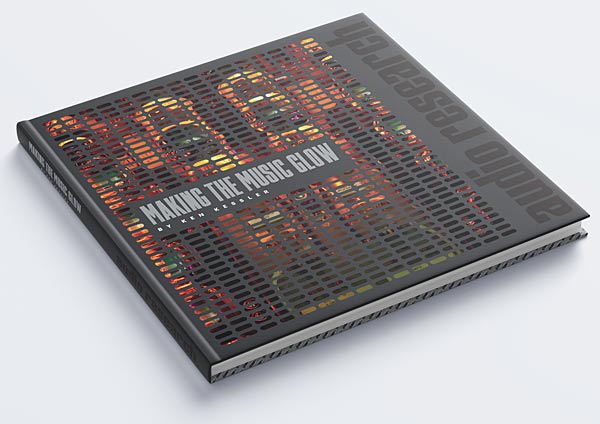
The SP-10 was designed by a team led by William Zane Johnson, who founded Audio Research in Minnesota in 1970. After nearly four decades at the company's helm, he stepped aside in 2008, becoming chairman emeritus before passing away in 2011. But his legacy lives on, with a continuing succession of great-sounding tube preamplifiers and amplifiers. Several engineers contribute to the designs, but a consistent presence is Warren Gehl, Audio Research's long-term setup person and "Aural Evaluator," the "guardrail that keeps the company on the straight and narrow sonically," I was told by Dave Gordon, Audio Research's long-term keeper of the brand's institutional memory.
I was planning to review the latest product from Audio Research, the I/50 integrated amplifier, which costs $5500, earlier this year. However, with the uncertainty back then about the company's ownership, I postponed the review. When the news broke in June that Audio Research had been acquired by AR Tube Audio Corporation, a privately owned corporation that includes Valerio Cora of Canadian loudspeaker manufacturer Acora Acoustics as a director—see Industry Update in this issue—I unboxed the I/50 and set it up in my listening room.
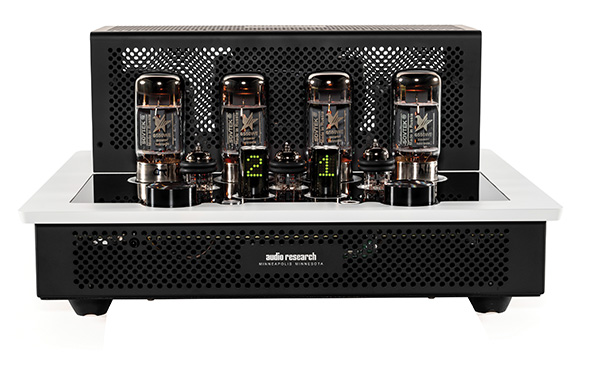
The I/50
This is a tidy-looking tube amplifier. The black-gloss top panel has an aluminum surround, which is available in six anodized finishes. The review sample's was blue. Emerging from that top panel are two matched pairs of JJ "Eurotube" 6550WE output tubes and three 6922 small-signal tubes (footnote 1). A black cage at the panel's rear covers the AC power transformer and the two output transformers. At the front of that top panel are a ¼" headphone jack, a Power/Standby button, two rotary controls, and two black cylindrical pillars.
I wasn't sure what these pillars were until I plugged in the power cable and pressed the Power button. Inside the pillars, light-green alphanumeric "Lexi-tube" displays lit up and counted down from "50" in seconds. Once the numbers reached zero, the display briefly showed which input was last selected—"B" and "L" for Balanced, for example—and then showed the prior volume setting, on a scale from "00" to "45." Pressing the volume control at the right front of the top panel unmutes the amplifier, the Lexitubes brighten, and a new input can be selected by rotating the knob on the left front of the panel. Pressing the Power button a second time puts the amplifier in Standby mode, and the displays show a single dot. (In this mode, the tubes are powered down, but the control circuitry remains active.) The manual warns that after the amplifier has been put in standby, the user should wait at least three minutes before turning it back on.
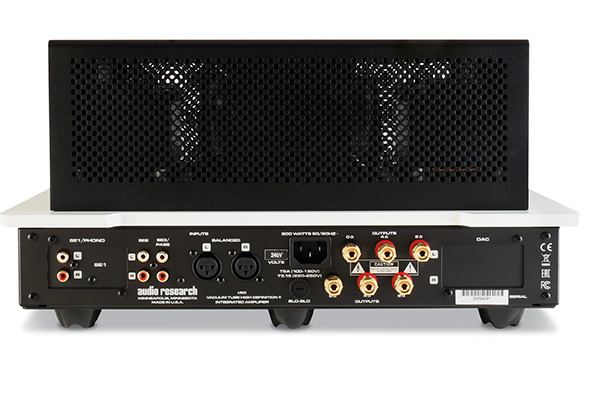
There are four inputs on the rear panel, one balanced pair on XLR jacks and three single-ended pairs on RCA jacks. The first RCA pair, labeled "SE1," serves as input for the optional MM/high-output MC phono module ($750) if it is installed. (There is also an optional DAC module for $1000.) Otherwise, SE1 is line level. The second input, SE2, is a standard line-level input. The third, labeled "SE3/PassThru," can be used either with the volume control active (as a standard line-level input) or set to unity gain to allow the connection of a secondary preamplifier such as a multichannel processor. Pressing and rotating the source selector allows the Phono and PassThru settings to be changed when these inputs are active.
There are three heavy-duty speaker binding posts for each channel, marked "0Ω," "4Ω," and "8Ω," which connect to the transformer taps intended for nominally 4 ohm and 8 ohm loudspeakers. The posts for each channel are vertically offset from one another, but with the adjacent IEC power jack, space is tight. Care needs to be taken when connecting speaker cables unless they are fitted with banana plugs.
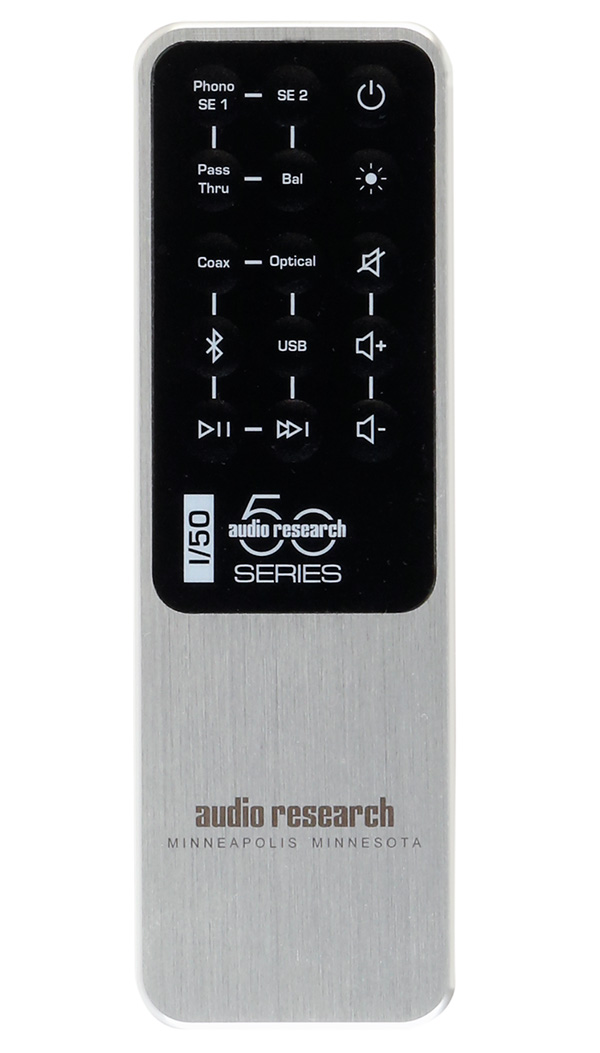
All the top-panel functions, including setting the display brightness, are duplicated on a slim metal remote control. I didn't see any way to change its battery, if that becomes necessary, but Dave Gordon enlightened me: "Just push a pin into the hole on the back of the remote and it will push out the control board."
The Audio Research I/50 is a combination of classic tube amplifier design with 21st century microprocessor-controlled functionality.
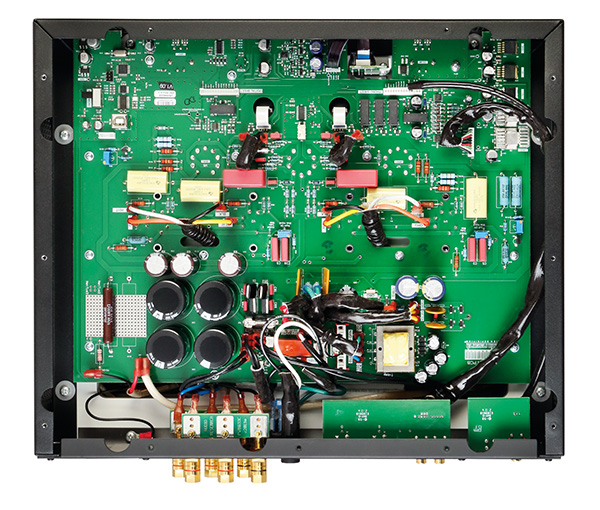
Setup
The review sample wasn't fitted with the optional Phono or DAC modules (footnote 2). After I installed the tubes, following the numbering in the packing list and making sure that the supplied tube-damping ring was fitted to the central 6922, the input tube, I used two different speakers with the Audio Research amplifier, both standmounts: my long-term reference KEF LS50s and a pair of GoldenEar BRXes.
To operate the I/50, I exclusively used its ergonomically satisfying remote control. Sources were either an MBL N31 CD player/DAC, connected to the I/50's balanced input with Ayre/Cardas Signature cables, or the HiFi Rose 250A streaming DAC connected to SE2 with unbalanced Canare cables.
I set both D/A processors' volume controls to their maximum and sent them audio data with Roon via an Ethernet connection from my router. (As always, I used Roon's parametric equalizer to flatten the speakers' midbass region and extend the bass.) I also briefly used the Mytek Brooklyn Bridge II that Tom Fine reviews elsewhere in this issue.
Listening
As always, I started my auditioning with some of my own recordings, using the amplifier's 8 ohm output taps. Although neither loudspeaker is a particularly demanding load, with impedances that remain above 6 ohms over much of the audioband, the balance was somewhat forward-sounding with a touch of glare in the midrange—the latter especially with the GoldenEars. The amplifier's manual cautions that "it is important to use as close as possible an impedance match between the amplifier and speaker for optimum transfer of power to the speaker with minimum distortion." I changed to the 4 ohm output taps. After adjusting the volume to compensate for the lower gain—see the Measurements sidebar—I heard considerable improvement, and I used that output for the remainder of my auditioning.
Footnote 2: I was sent the DAC module toward the end of the review period. I will write about the module's performance in a future issue.

Both these GoldenEar (EPDRs of 2.15 ohms at 59Hz and 1.53 ohms at 135Hz), and Kef(EPDRs of 1.66 ohms between 135Hz and 140Hz) speakers were not the best load for a tube amp such as this to be reviewed with, it may have faired a lot better with speakers with easier loads.
Both the GoldenEar and Kef have EPDR impedance loads down below 2ohms in areas where power is needed measured by JA himself.
Cheers George

Hi George,
The JVS Music Room Enlargement Fund (MREF) is a mere $25,000 short of its goal. It would be great if you would contribute a large chunk of that, plus extra money for the assistants whom I will need to hire monthly to help me move and properly place two sets of speakers.
Thank you so much,
jason

If your a paid reviewer. Then they are tools of the trade, & "retail" tax deductible with the "right receipt". On top of getting them @ cost, not that anyone does that
https://img.freepik.com/premium-vector/angel-emoticon-isolated-white-bac...
Thanks George

Does your statement stand in contradistinction to JA's comment that "...neither loudspeaker is a particularly demanding load, with impedances that remain above 6 ohms over much of the audioband,..."?

I understand Stereophile can only use the speakers they have on hand at the time. But maybe it's time to have 2 pairs of resident speakers, easy load, and hard load, to give the readers a bit better indication of how amps really sounds with both loads?
Cheers George

I'll be sure to check in with you next time my shoulds list runs low. In the meanwhile, what do you charge for accounting services?
jason

Saying about tradesman and their tools.
Should be, maybe they should just get the right ones.
Cheers George

Sorry, this is off-topic, but since this is the most recent entry by JA, I thought it may get prioritized in the "Reply to" email notification system ;)
This query is about JA's Measurements of DACs ... notably:
"Fig.8 DAC brand-model-x spectrum of 50Hz sinewave, DC–1kHz, at 0dBFS into 600 ohms (left channel blue, right red; linear frequency scale)."
I've often noted JA refer to this as a "punishing" test and if a d/a unit performs well, it is "bomb proof".
I assume -- correct me if I'm off -- that this is because DAC's output is not "experiencing" its expected high-Z pre-amp load? Hence, it's output stage is forced to drive more current, concomitantly "overloading" that stage a bit. Yes?
Does the output stage exhibit thermal stress (heat, FLIR glow)? Is this a bit like amplifier clipping?
Thanks in advance for JA/anyone's feedback!

"Does the output stage exhibit thermal stress (heat, FLIR glow)? Is this a bit like amplifier clipping?"
Very much so, there are some amps that have stupid low input impedances 1khom-10kohm as yes this taxes some sources output stages./ Gone are the great days when the industry standard input impedance for amps was 47kohm, and tubes were 100kohm and anything could drive them.
Cheers George

Note that my query was specifically about JA’s 600 ohm DAC and/or disc or file-player test.
See:
https://www.stereophile.com/content/musical-fidelity-nu-vista-3d-cd-play...
JA may (???) have introduced this test after RH left. Not sure??? Even JA's early digital reviews did not include the 600-ohm test, but it got added in later.
Pre-amps and headphone amps also include similar distortion tests, but not the "low Z" load variety.

Many tube amplifiers I know drives speakers better than what their spec wattage may suggested. However, this particular amp may be opposite? Not sure how to interpret that this amp struggles a bit at the specified impedance terminals. My question is does I/50 exhibit clipping with the moderate load which is normal for many modern speakers?

"I was alarmed to read "Installation of the DAC Module should only be attempted by electronic technicians or other qualified service personnel."
Since the amp chassis contains high voltages, they obviously needed to cover their posterior.

I was very interested in purchasing the amplifier until I found out, balanced inputs beyond 2v are not compatible with the i50. Most every DAC that has a fully balanced design, sounds best from its balanced output and nearly all have normal out voltages over 3volts. The i50 is not even compatible with Audio Research’s own DAC9 if balanced connections are employed. It was likely a design oversight to incorporate balanced inputs on the i50.